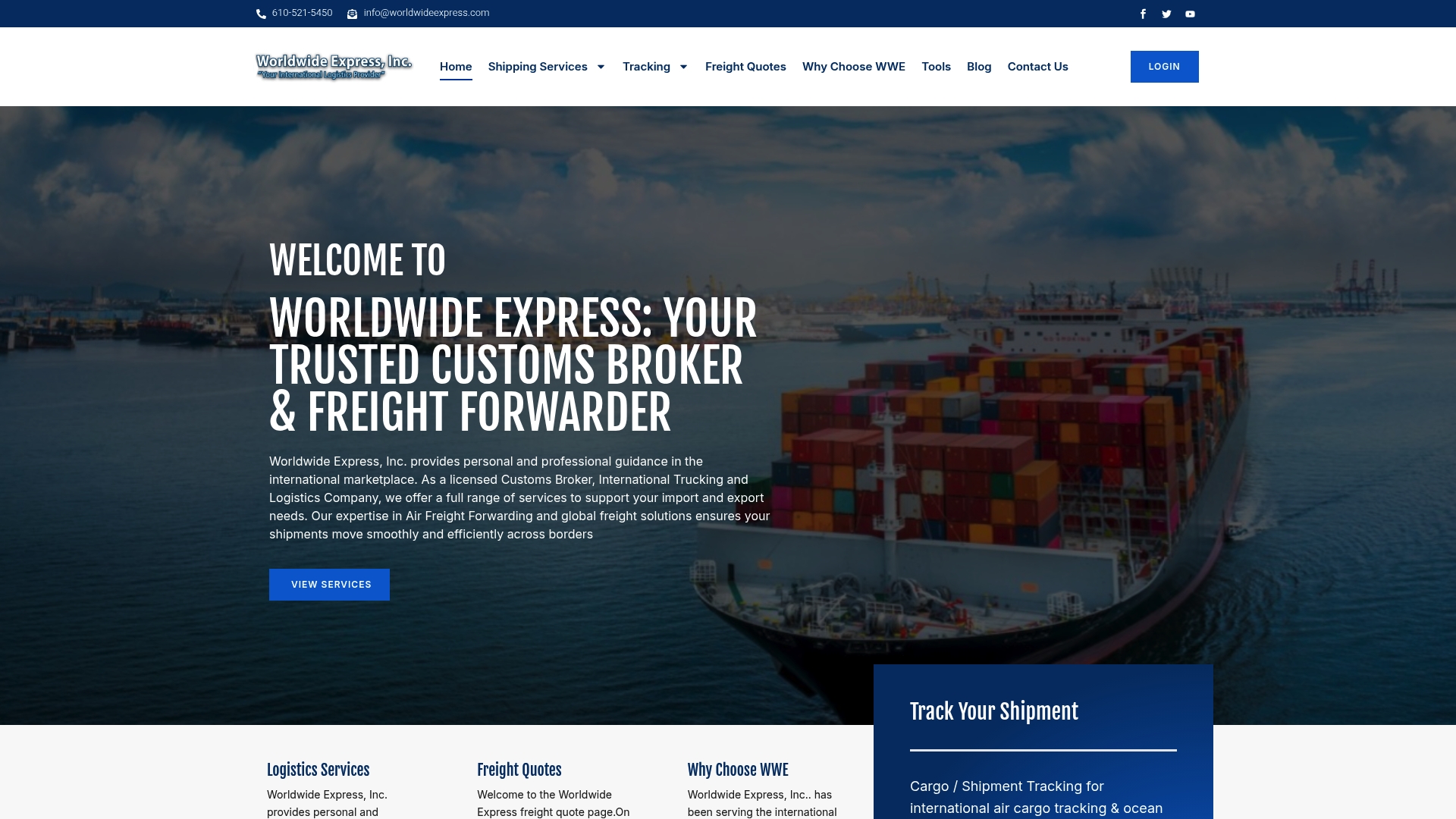Every package that crosses international borders starts its journey with a shipping manifest, the document that holds the keys to what’s moving where and why. Now get this. A single missing detail on a shipping manifest can halt a container worth over $100,000 at customs for days. Most people focus on the cargo itself, but it’s actually the paperwork that makes global trade possible. Without the humble manifest, the wheels of commerce grind to a messy stop.
Table of Contents
- Defining A Shipping Manifest And Its Purpose
- The Importance Of Shipping Manifests In Trade
- How Shipping Manifests Facilitate Customs Clearance
- Key Elements Included In A Shipping Manifest
- Real-World Applications And Best Practices
Quick Summary
| Takeaway | Explanation |
|---|---|
| Shipping manifests are essential for trade | They provide a detailed record crucial for customs, tracking, and compliance in international shipping. |
| They enhance customs clearance efficiency | Detailed manifests enable customs authorities to perform accurate inspections and assessments, reducing processing times. |
| Key components include shipper and consignee info | Having complete contact details ensures effective communication and tracking throughout the shipping process. |
| Technological advancements improve manifest management | Digital tools like real-time tracking and automated compliance enhance accuracy and streamline operations in logistics. |
| Manifests support risk management in shipping | They provide critical insights that help identify and mitigate potential challenges during transportation. |
Defining a Shipping Manifest and Its Purpose
A shipping manifest is a comprehensive document that serves as the primary record for goods being transported across various transportation modes, including maritime, air, and land freight. Understanding shipping documentation is crucial for international trade and logistics operations.
What Exactly is a Shipping Manifest?
A shipping manifest is an official inventory detailing every item, package, and cargo being transported in a specific shipment. It provides critical information about the shipment’s contents, origin, destination, weight, dimensions, and other essential characteristics. This document acts as a legally binding record that helps customs authorities, shipping companies, and logistics providers track and manage international cargo movements.
Core Components of a Shipping Manifest
Shipping manifests typically include several key elements that ensure comprehensive cargo documentation:
- Shipper Details: Complete contact information for the sender
- Consignee Information: Recipient’s full shipping address and contact details
- Cargo Description: Detailed inventory of goods being transported
- Packaging Information: Number and type of containers or packages
- Weight and Measurement: Total shipment weight and dimensional specifications
- Declared Value: Monetary worth of goods for insurance and customs purposes
These components collectively provide a transparent and traceable record of international cargo movements, enabling efficient logistics management and regulatory compliance.
The following table breaks down the core components of a shipping manifest and provides a brief explanation of each feature to support clarity and quick reference.
| Manifest Component | Description |
|---|---|
| Shipper Details | Full contact information for the sender of the cargo |
| Consignee Information | Recipient’s shipping address and contact details |
| Cargo Description | Comprehensive inventory of items within the shipment |
| Packaging Information | Number, type, and specifications of containers or individual packages |
| Weight and Measurement | Total shipment weight and dimensional details |
| Declared Value | Listed monetary value of the goods for insurance and customs assessment |
| By capturing every critical detail about a shipment, shipping manifests play a pivotal role in facilitating smooth global trade operations. |
The Importance of Shipping Manifests in Trade
Shipping manifests are fundamental instruments in international trade, serving multiple critical functions that ensure smooth, transparent, and legally compliant cargo transportation. Learn more about trade documentation essentials to understand their comprehensive role in global logistics.
Legal and Regulatory Compliance
Shipping manifests play a pivotal role in meeting international trade regulations. Customs authorities rely on these documents to verify cargo contents, assess appropriate tariffs, and prevent smuggling or illegal goods transportation. By providing a detailed inventory of shipped goods, manifests enable regulatory agencies to conduct thorough inspections and enforce trade policies effectively.
Economic and Logistical Significance
Beyond regulatory purposes, shipping manifests are crucial for economic tracking and operational efficiency. These documents help businesses and logistics providers manage complex supply chain processes by offering:
- Precise Cargo Tracking: Real-time monitoring of shipment location and status
- Financial Documentation: Accurate record-keeping for tax and insurance purposes
- Risk Management: Detailed information to assess potential shipping challenges
- Inventory Control: Comprehensive insights into goods in transit
According to the World Trade Organization, shipping manifests are essential instruments for maintaining transparency and accountability in international trade transactions.
They serve as a critical communication tool between shippers, carriers, customs officials, and other stakeholders involved in global commerce.
How Shipping Manifests Facilitate Customs Clearance
Shipping manifests serve as crucial communication bridges between international traders and customs authorities, streamlining the complex process of cross-border cargo verification. Learn more about customs clearance procedures to understand the intricate documentation requirements.
Customs Declaration and Risk Assessment
Customs authorities utilize shipping manifests as primary tools for conducting comprehensive risk assessments. By meticulously reviewing the detailed cargo inventory, officials can quickly identify potential regulatory concerns, assess appropriate duty rates, and determine whether additional inspections are necessary. The manifest provides a transparent snapshot of goods entering or leaving a country, enabling targeted and efficient customs processing.
Key Documentation Functions in Customs Clearance
Shipping manifests perform several critical functions that directly support smooth customs clearance operations:
- Cargo Identification: Precise description and classification of goods
- Value Verification: Accurate declaration of shipment monetary worth
- Compliance Validation: Ensuring all import/export regulations are met
- Duty Calculation: Facilitating accurate tax and tariff assessments
According to the World Customs Organization, shipping manifests are integral to modern customs management systems. They help standardize international trade documentation, reduce processing times, and minimize potential errors or discrepancies that could delay cargo movement across national borders.
The table below summarizes how shipping manifests contribute to key customs clearance processes, enabling more efficient, secure, and compliant international shipping operations.
| Customs Clearance Function | Role of Shipping Manifest |
|---|---|
| Cargo Identification | Details shipment contents for accurate classification of goods |
| Value Verification | Discloses declared value for proper tariff and duty assessment |
| Compliance Validation | Confirms adherence to import/export laws and regulations |
| Duty Calculation | Supplies necessary data for precise tax and tariff calculation |
Key Elements Included in a Shipping Manifest
A comprehensive shipping manifest contains multiple critical components that provide a complete picture of cargo transportation. Explore detailed shipping documentation guidelines to understand the nuanced requirements of international trade records.
Shipper and Consignee Information
The shipping manifest begins with detailed identification of both the sender and recipient. This section includes complete contact details, including names, addresses, contact numbers, tax identification numbers, and electronic communication coordinates. Accurate contact information ensures proper communication channels and enables seamless tracking throughout the shipping process.
Cargo and Transportation Details
This critical section provides comprehensive information about the goods being transported and the specific transportation parameters:
- Cargo Description: Detailed inventory of goods, including item type, quantity, weight
- Packaging Specifications: Container types, number of packages, dimensional measurements
- Transportation Mode: Specific method of transport (maritime, air, ground)
- Vehicle/Vessel Identification: Unique identifiers for transportation equipment
- Route Information: Origin, destination, and planned transit points
According to the International Maritime Organization, precise documentation is essential for maintaining global shipping safety and regulatory compliance. Each element in the shipping manifest serves a crucial role in tracking, managing, and verifying international cargo movements, ultimately facilitating smooth and transparent global trade operations.
![]()
Real-World Applications and Best Practices
Shipping manifests are dynamic tools that extend far beyond simple documentation, playing crucial roles across various industries and transportation scenarios. Explore international shipping best practices to understand comprehensive logistics management.
Industry-Specific Manifest Applications
Different sectors leverage shipping manifests uniquely to address their specific operational requirements. In maritime shipping, manifests help track complex multimodal transportation routes. For pharmaceutical companies, these documents ensure critical temperature-sensitive medications are monitored throughout transit. Manufacturing firms use manifests to manage intricate global supply chains, tracking raw material shipments and finished product distributions with precision.
Digital Transformation and Manifest Management
Modern shipping manifest practices increasingly incorporate advanced technological solutions to enhance accuracy and efficiency:
- Digital Documentation: Replacing paper-based systems with electronic manifests
- Real-Time Tracking: Implementing GPS and IoT technologies for instant cargo monitoring
- Automated Compliance: Using AI-driven systems to validate documentation instantly
- Blockchain Integration: Creating immutable, transparent shipping records
According to the International Chamber of Shipping, technological innovations are revolutionizing maritime documentation, making shipping manifests more reliable, secure, and instantaneously accessible across global logistics networks. These technological advancements are critical in addressing the increasing complexity of international trade and transportation requirements.

Ready for Shipping Manifest Confidence? Let Worldwide Express Handle the Details
Are you feeling overwhelmed by the complexity and risk of compliance when it comes to shipping manifests? Worrying about errors, slow customs clearance, or missing documentation can lead to costly delays and lost business opportunities. At Worldwide Express, Inc., we understand that accurate manifests are vital for smooth customs clearance and efficient international trade. Our expertise in freight forwarding, compliance, and logistics can help you avoid common pitfalls that slow down your shipments. For more insights, visit our Uncategorized Resources for additional documentation guidance.

Let our experienced team simplify your shipping process by taking care of your manifest preparation, customs clearance, and full supply chain management. Visit Worldwide Express, Inc. today to discover how our customized international shipping solutions can deliver peace of mind. Request a consultation now so you can focus on growth while we handle the compliance and logistics you depend on.
Frequently Asked Questions
What is a shipping manifest?
A shipping manifest is a detailed document that serves as an inventory of all goods being transported in a shipment. It includes essential information like the shipper and consignee details, cargo description, and packaging information. To create one, list all items and their associated details before shipment.
Why is a shipping manifest important for customs clearance?
A shipping manifest is crucial for customs clearance as it provides customs authorities with a transparent view of the goods being imported or exported. This ensures compliance with regulations and helps in accurate duty calculations. To streamline the process, prepare the manifest accurately and submit it alongside other required documentation.
What key components should be included in a shipping manifest?
A shipping manifest should include items such as shipper and consignee information, cargo descriptions, packaging specifications, weight, and declared value. Make sure to gather all this information before creation to avoid delays in shipping and customs processing.
How does a shipping manifest support risk management during transport?
A shipping manifest aids in risk management by providing detailed information that helps identify potential challenges during transit. This information helps logistics providers take preventive measures against issues that could arise, like delays or security concerns. Regularly review and update your manifest to reflect any changes in cargo or logistics.
How can I improve the accuracy of my shipping manifests?
Improving the accuracy of shipping manifests involves double-checking all entries for completeness and correctness, including shipper and consignee details and cargo descriptions. Implement a checklist to verify each section of the manifest before dispatch. This practice can reduce errors and improve the reliability of your shipping documentation, often decreasing processing times by 20% or more.
Can shipping manifests be digitized, and what are the benefits?
Yes, shipping manifests can be digitized, and doing so offers several benefits such as improved accuracy, faster processing, and easy access to documentation. Transition to an electronic format to minimize errors and streamline communication among stakeholders. Businesses that digitize can often enhance operational efficiency significantly, cutting down on paperwork-related delays.






